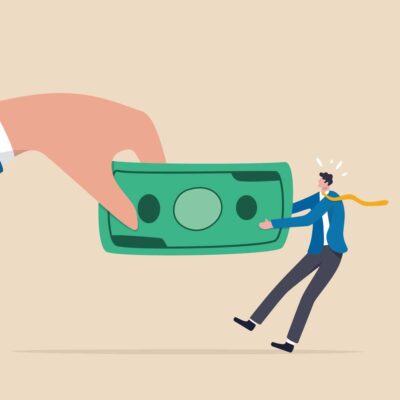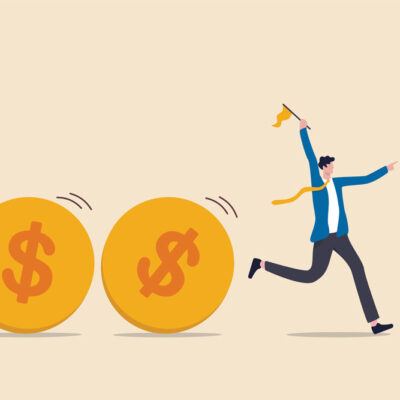
Never Before…
Market Commentary July 2020
Never before March 2020 has everyone in the US conducted their daily lives in lock step.
Never has everyone’s home become a prolonged, forced containment-shell. Never before have airlines filled major airports with parked planes. Never have all American office buildings gone dark for weeks. Never have the nation’s entire spectrum of performing arts ceased to rehearse and perform. Never have the nation’s children and teachers been locked out of schoolhouses. Never have we explored the apparently endless limits of our several TV remotes.
And, never have tens of millions of Americans lost their jobs… within weeks. And never, ever has America’s Economic Soul…. its manufacturing and retail businesses…. Been mass-shuttered by government orders. [Even more tragically, the dire economic suffering is hugely skewed. It has completely side-stepped the white collars, most of whom can do their business and their meetings virtually.]
Moreover, in reviewing America’s 2020 economic stew-to-date, we can’t ignore another predictable, but inappropriate ingredient: Politics. Even before The Virus and the recently hatched street Movements, 2020 was already on track to produce the most divisive, barbarous electoral contests on record. Appropriate, effective leadership is prescribed by nearly all who comment, but 2020’s US election contests, fought with sledgehammers in cave-man fashion, is likely to be a more fitting description.
DESPITE THE VIRUS, THE FUTURE WILL HAPPEN
In early March, the US economy abruptly halted. On March 25, 2020, the US Senate passed the Coronavirus Aid, Relief and Economic Security Act (the “CARES Act”). The CARES Act consists of a nearly $2 trillion stimulus package aimed at delivering critical assistance to the U.S. economy. The Act became law on March 27, 2020. The keystone of the CARES Act is $500 billion in loans and loan guarantees to support certain hard-hit economic-core industries (airlines, etc.) and also a broad, non-specific range of borrowers. The Act also includes unemployment and other labor-related assistance to businesses and workers, more than $377 billion in federally guaranteed loans to small businesses, and tax provisions aimed at shoring up businesses.
No Loan Forgiveness. The principal amount of any obligation issued by an eligible business cannot be reduced via any form of loan forgiveness.
On April 24, 2020, a subsequent $480+ billion stimulus package, the Paycheck Protection Program and Health Care Enhancement Act was enacted (as an amendment to the CARES Act).
The CARES Act also requires that, until one year after the date that a CARES loan or loan guarantee is no longer outstanding: (a) the business may not repurchase its own stock, or pay dividends, or make other capital distributions; and, (b) until September 30, 2020, the business must maintain its existing employment levels to the extent practicable and in any case, retain at least 90 percent of its employees employed as of March 24, 2020… This well-intended provision has produced an avalanche of knotty, unworkable consequences.
There will be more. Much more. Congress will surely enact new legislation, again labeled “stimulus”…. dollars that were (1) created by the Fed and given to the Treasury, (2) in order to fund Treasury’s new debt paper, which (3) pays for massive distribution of government checks, sent to homes and businesses.
MEANWHILE, the Federal Reserve was busily doubling the size of its assets (since one year ago), by giving electronic birth to more than 3 trillion new dollars. During the 3-month period ended May 28, 2020, the Fed bulked-up by almost 70% (+$2,857,000,000,000): Fed Assets:
- Mar 4, 2020 $4.2 trillion
- May 28, 2020 $7.1 trillion
Fed Investments on July 1, 2020 (purchased in the open market):
- $4.2 trillion US Treasury securities (a 64% increase since February)[1]
- $1.9 trillion Ginnie Mae, Fannie Mae, Freddie Mac securities
As Fed Chairman Powell has assured us (on CBS 60 Minutes), there is yet more money-creation to come, if/when/as needed. In fact, there will be a whole new category of Fed investments directly into corporate debt; some of it will even be invested in bonds rated as “junk”. And there will also be a renewal of the successful 2008 Term Asset-Backed Securities Loan Facility (TALF) which will fund purchases of securities that invest in bundles of individual consumer-debt: auto loans, credit card debt, student loans, etc.
Stock Market Players: Shrewd analysts of a short-run economic dip or hard-core Optimists?
It must be one of these two explanations*, because, after a 2-week panic in March, they haven’t seriously looked back.
*notwithstanding the alleged cohort of Millennial day-traders, using newly offered fractional share-slices and the RobinHood brokerage platform.
Once the equity market participants got a grip on the emerging pattern of the coronavirus, the markets swiftly threw aside the deep uncertainty that had opened its drain plug in March. As we had speculated during its worst stage, the 2nd and 3rd quarters’ corporate earnings will be dismal, but that certain fact wasn’t what investors cared about. The next reality-hurdle to be produced: a robust economic return in the 4th quarter (and beyond).
The stock markets continued to churn out significant recovery gains, after March 19. Some pundits predict a 5G tech-driven blowout before year end, and some forecast a final, orgasmic melt-up, as prelude to the inevitable melt-down. Others pontificate that market history pushes them to conclude that it will “re-test its mid-March bottom”; still others said that the markets are “ahead of themselves” and will go through a period of back-and-fill.
Meanwhile, the tech sector (NASDAQ) that sports some of the world’s largest market capitalizations continues to outperform the DOW and S&P500, most days, even down ones. New market darlings in that sector represent companies that facilitate stay-at-home business, leisure and educational activities.
And then there’s Tesla, the battery-operated powerhouse that has burst into unexpected sales volume and profitability. In this market-troubled year 2020, Tesla shares have risen by more than $1,000 (over 250%). Elon Musk, the ultra-brash founding father of both Tesla and 6 human children, has now overrun the Legend of Steve Jobs. In fact, this often dismissed, market-creating car mogul has thrust himself to the single company, equity-rich billionaires plateau, alongside Bill Gates, Warren Buffet and recently crowned Jeff Bezos. [Musk also owns not-yet-public SpaceX, funded with proceeds from selling the software startup that became PayPal. SpaceX is the first for-profit missile/space exploration company. It has pulled off a flawless manned mission to the International Space Station, including successful landing/recovery of its re-usable booster rocket on a tiny barge in the ocean, providing yet another model of business inventing efficiency, where government had no such priority.]
In brief: the high level of uncertainty surrounding an unpredictable number and size of coming pandemic patterns, plus waves of societal disruption and November elections force any market forecast for 2020, including ours, into a bottle of low probability guesses. However, if even a positive probability of having a safe and effective vaccine shows up on the near-term horizon, the entire face of predictions and market response will go into a new melt-up (a buying panic).
Value Stock Woes
The recent stock market rally hasn’t been kind to Value-style stocks (again). Growth stock returns that continued to be blown up by the technology sector are still racing ahead of the entire stock market. The spread between Growth and Value has continued to widen, to the point of ridiculousness (please see below). Value has simply performed increasingly miserably, for an unusual amount of time, without a breather. After all, value stocks have that name because their typical characteristics are valuable and reasonably priced, in one, or several of the following ways:
- well capitalized, with low/moderate debt-to-capital ratio,
- dependable dividend payouts, higher than the overall market rate,
- significant asset value, unrecognized in financial accounting,
- relatively low price-to-earnings ratio,
- moderate, non-volatile earnings growth,
- turnarounds and “fallen angel” growth companies.
Two crucial characteristics that have continuously powered young growth companies since mid-1990s that are generally absent in established, well run value companies: (1) product scalability, and (2) product distribution via Internet. In summary, this has been the Microsoft-Google-Facebook story. It still works and it’s still growing, 25 years on. These growth giants and their hundreds of young comrades (DocuSign, Zoom, etc.) can grow their businesses without major sales forces, giant travel budgets, massive inventories…. not even accounts receivable (the problem-aspects of value companies that need constant care, feeding and management).

Value indexes contain the following cyclical market segments: Healthcare (20%), Financials (20%), Consumer goods and services (20%), Industrials (11%), Utilities and Energy (12%), Technology (8%), others (9%). Many companies in the Financial sector (insurance, securities brokers, banks and other money lenders) are down in 2020 by 25%. Banks are continuing their long-run, extreme interest rate scenario and, worse, the Fed apparently expects to keep its hammer down for a couple more years to come. In the immediate term, lenders have especially gloomy hurdles to surmount, from pandemic-caused debt defaults to the eventual return of inflation that will effectively devalue nearly all debt instruments. Clearly, there is no daylight yet at the end of the money lenders’ tunnel to the future. The Healthcare sector which, in the past, has sometimes had exciting returns is about breakeven for 2020. The drugs component is having a good year, but the hospital component has faced a near cutoff of profitable elective surgeries, while beds are assigned to mostly elderly Covid patients whose bills are typically paid by spartan Medicare/Medicaid benefits. The Energy sector is and has been the worst performing market sector, fed by plunging worldwide oil demand and a continued fracking supply-glut. Another dark cyclical category (which isn’t included in most value indexes) is Transportation (airlines, rail, delivery, truckers), along with Leisure and Lodging stocks (hotels, cruise lines, casinos, etc.) that have been hammered by a stay-at-home syndrome that looks as if it will never end.
Another current market syndrome that increasingly seems to be stealing capital flows from the Value sector is a booming private equity movement. Its traditional difficult-to-access doorways have been opened to smaller investors who apparently believe that very limited liquidity is a non-problem for them.
A hallmark of nearly all value stock categories has always been the robust dividend yields, while growth stocks pay notoriously low dividends, or none at all. With low and falling market interest rates on bonds, it would seem automatic that healthy dividend stocks would attract yield-seeking investors’ capital…. but, in general, they haven’t. It is difficult to discern why so many dividend rates continue to be high (because, if a dividend stock price were rising, the dividend yield % would be lower). It is especially curious to see modest stock price growth in many companies that steadily grow their dividend payouts.
BRIEF HISTORY: Many are asking whether Value is dead, or merely on a ventilator. We remember how strongly the late 20th Century crowd asked that same question. And we remember that some many-billion-dollar public retirement system investment funds were so convinced of the answer to that question, they actually terminated their value-style investment managers. We remember how the Internet and its offspring became the only game inside of sophisticated portfolios. Indeed, we remember the 1999-ish line: “Value is dead, and Warren Buffett may as well be.”
The next year, Value revived, just in time to become a beacon in the dark days of 2000-03, spurred by rising Fed interest rates (from record lows). In fact, 2000 was the first year since 1993 that the S&P 500 Value Index beat the S&P 500 Growth Index. The small cap Russell 2000 Value Index posted a +22.8% return, versus a loss of 22.4% for its growth index counterpart.
So, NASDAQ technology is now the only game in Wall Street, while lockdowns and deep business curtailments continue to muffle the length and breadth of Value companies’ business lifelines. And Warren Buffett, now pushing age 90, is currently hatching headlines that wonder about him losing his touch. But, we must also conclude an important, dependable fact about Value, when (probably not if) Growth shares ski down the steep mountain they are now ascending: Value companies, particularly those with robust dividend yields, will not have far to go down from their relatively low perch, before they become compelling buys.
[1] As is readily apparent, the US Treasury’s routine $1 trillion annual budget funding shortfalls, together with the 2020 double whammy impact of COVID 19 and the Congress’s resulting CARES Act, would have put the Treasury into dire straits, without the Fed’s “rescue money” creation that was used to buy a couple trillion dollars of new Treasury debt.
Commentary
Commentary was prepared for clients and prospective clients of FiduciaryVest LLC. It may not be suitable for others, and should not be disseminated without written permission. FiduciaryVest does not make any representation or warranties as to the accuracy or merit of the discussion, analysis, or opinions contained in commentaries as a basis for investment decision making. Any comments or general market related observations are based on information available at the time of writing, are for informational purposes only, are not intended as individual or specific advice, may not represent the opinions of the entire firm and should not be relied upon as a basis for making investment decisions.
All information contained herein is believed to be correct, though complete accuracy cannot be guaranteed. This information is subject to change without notice as market conditions change, will not be updated for subsequent events or changes in facts or opinion, and is not intended to predict the performance of any manager, individual security, currency, market sector, or portfolio.
This information may concur or may conflict with activities of any clients’ underlying portfolio managers or with actions taken by individual clients or clients collectively of FiduciaryVest for a variety of reasons, including but not limited to differences between and among their investment objectives. Investors are advised to consult with their investment professional about their specific financial needs and goals before making any investment decisions.
Investment Risk
FiduciaryVest does not represent, warrant, or imply that the services or methods of analysis employed can or will predict future results, successfully identify market tops or bottoms, or insulate client portfolios from losses due to market corrections or declines. Investment risks involve but are not limited to the following: systematic risk, interest rate risk, inflation risk, currency risk, liquidity risk, geopolitical risk, management risk, and credit risk. In addition to general risks associated with investing, certain products also pose additional risks. This and other important information is contained in the product prospectus or offering materials.





